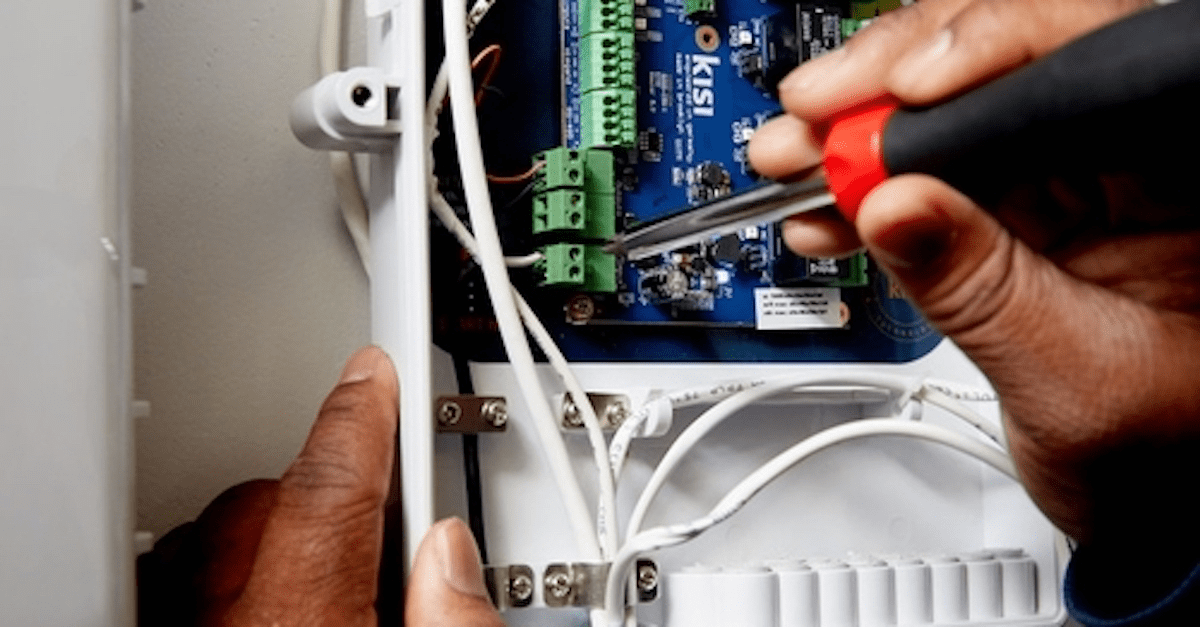Although banks don’t have to be Fort Knox, they have no room for errors when it comes to security. They have to keep everyone safe, including customers, employees, and their assets, which becomes a lot easier with a robust access control system. Thanks to this system, banks can implement cybersecurity principles like zero trust, which improve overall security.
While an access control system is critical, maintaining it is not as easy as you think. For one, banks need strict security measures, including 24/7 monitoring. Secondly, they usually require a complex maze of role-based access control. On top of that, like most electronic devices, access control systems can fail unexpectedly. That makes maintaining it all the more challenging.
Let’s look into these access control system challenges and how to overcome them.
Regular Updates
Your bank access control system has two components – software and hardware. They are like the two sides of a coin. The hardware relies on regular software updates to function smoothly.
However, without sound management, these updates can disrupt your daily operations. For instance, if your system needs to reboot after an update, it will go offline for a few minutes. This can wreak havoc during the business hours.
We recommend scheduling updates during off-hours. This reduces the risk of disruption and a potential security incident. But, you also need to consider a few other things, like:
- Back up your critical data regularly.
- Keep the system under lockdown during the updates.
- Test the system thoroughly after the updates.
- Address any glitches or issues then and there.
Taking these steps will keep your system running on the latest, most secure software.
Hardware Failure
Hardware components are prone to wear and tear. Even if one hardware component, like an access card reader, fails, it can bring your entire access control system to its knees.
Typically, your system will send alerts when a piece of hardware fails. However, regular, proactive maintenance can help reduce the risk of such failures. Ask your in-house maintenance crew to regularly check your system for damaged components. If found, fix the issue before it leads to a system-wide failure.
You can create a maintenance schedule for your in-house team or consider entrusting scheduled access control system maintenance to a team of experts. Whatever you do, keep the following in mind:
- Stock backup hardware components.
- Keep the hardware free from dust and dirt.
- Train your employees to use the access control tools properly.
- Buy high-quality hardware compatible with your access control system.
Network Security
Chances are, your access control system is a part of the bank’s network. That makes it vulnerable to cyberattacks. If your access control system lacks cyber protection, it can lead to a system-wide data breach.
To overcome this challenge, you will need to:
- Install enterprise-grade firewalls to control incoming and outgoing network traffic.
- Encrypting sensitive data to protect it from unauthorized access.
- Use strict access controls measures to restrict who can use sensitive systems and data.
- Revoke expired access permissions and credentials.
- Use multifactor authentication (MFA) for added security.
- Regularly update software, firmware, and operating systems.
- Use Intrusion Detection and Prevention Systems (IDPS) to monitor traffic on your system.
- Evaluate your network security regularly.
System Integration
If your bank uses multiple security systems, which most likely it does, you want the access control system to work in sync with other systems. Otherwise, it can lead to data discrepancies, security vulnerabilities, and system failures.
Usually, you have two options – choose a system compatible with your existing setup or get an integrated solution from a single vendor.
Compatible Access Control System
When you talk to an access control system provider, explain your requirements clearly. Discuss what access controls you need. This will help you find a system that fits the bill. However, you might need to use APIs (Application Programming Interfaces) and middleware to facilitate integration. Also, test the access control system to see if it works seamlessly. It includes checking data accuracy and communication between different systems.
Integrated Solutions from a Single Provider
Another option is to get an integrated network security solution, including an access control system, from a single vendor. This eliminates compatibility concerns. These solutions often work right out of the box. They are also easy to monitor and maintain. However, a major drawback is that you’ve got to rely on one vendor for all your security needs. Also, this might prevent you from getting the latest security solutions.
Regardless of what you choose; you need to develop a system integration plan. This includes talking to all your stakeholders, defining your integration goals, and testing the system for efficiency.
Keep Your Access Control System Working Smoothly
Access control systems are at the heart of security in banks. These systems are critical but come with many challenges, ranging from hardware failures to software problems. However, you can keep your system running smoothly with regular software updates, proactive hardware maintenance, roust network security, and a well-planned system integration. The sooner you start implementing these best practices, the better.
Author Bio: Brian Kozlosky, President/Founder of 2 Krew Security and Surveillance – headquartered in Kittanning, PA. With a Bachelor of Science from Slippery Rock University, I have 15+ years of experience operating a successful security and surveillance company. You can get in touch with me on LinkedIn.


